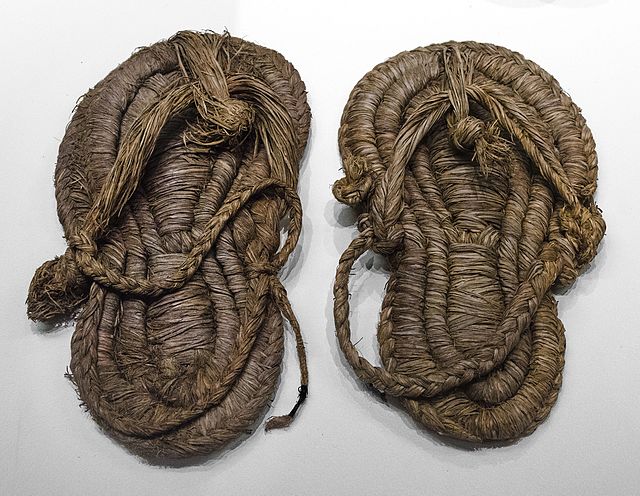Sandals are an open type of shoe, consisting of a sole held to the wearer's foot by straps going over the instep and around the ankle. Sandals can also have a heel. While the distinction between sandals and other types of footwear can sometimes be blurry, the common understanding is that a sandal leaves all or most of the foot exposed. People may choose to wear sandals for several reasons, among them comfort in warm weather, economy, and as a fashion choice. Usually, people wear sandals in warmer climates or during warmer parts of the year in order to keep their feet cool and dry. The risk of developing athlete's foot is lower than with enclosed shoes, and the wearing of sandals may be part of the treatment regimen for such an infection.
man wearing sandals
Modern fashion sandals
Esparto sandals from the 6th or 5th millennium BC found in Spain.
Pair of ancient leather sandals from Egypt.
A shoe is an item of footwear intended to protect and comfort the human foot. Though the human foot can adapt to varied terrains and climate conditions, it is vulnerable, and shoes provide protection. Form was originally tied to function, but over time, shoes also became fashion items. Some shoes are worn as safety equipment, such as steel-toe boots, which are required footwear at industrial worksites.
A variety of shoes displayed at the Nordic Museum, including models from 1700 to the 1960s.
The oldest known leather shoe, about 5500 years old, found in Armenia
Esparto sandals from the 6th or 5th millennium BC found in Spain
Footwear of Roman soldiers (reconstruction)







